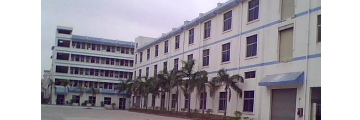1.Purpose and scope of application:
In order to further improve the quality of plastic products, this inspection standard can be strictly checked during the production and delivery of products, and the inspection standards for plastic parts and sprayed parts that are suitable for our company are formulated to provide scientific and objective methods for appearance inspection.For some defects which cannot be quantified, the inspection standard and sample sealing method formulated by both parties shall be used to solve them.
This inspection specification is applicable to the inspection and acceptance of electronic products made of plastic parts (shell and related plastic parts) and secondary processing workpiece products (spraying).
2. Refer to this inspection specification and refer to the manual of inspection and testing
3. The content:
3.1 the term:
1) heterochromatic point: the impurity with different color or mixed with resin is exposed on the surface.
2) gas filament: due to various reasons, the trace left by the gas on the surface of the product is different from the color of the underside and shiny, with flowing sample.
3) caving: due to material shrinkage, the whole surface of the product is locally caved in.
4) weld joint: during the molding process of the product, the connection of the fusion material of more than two strands shall be connected, which can be perceived visually and feel by hand.
5) lack of materials: some part of the product is not full.
6) white printing: due to the internal stress, the product surface produces different white marks from the original color.
7) edge :(burr) due to a variety of reasons, the non-structural parts of the product produce excess materials
8) blocking: the place that should be transparent is blocked due to the edge.
9) fracture: defects caused by partial disconnection of plastics.
10) lamella: the phenomenon of fine skin attached to the plastic surface by friction.
11) oil filaments: oil marks, for various reasons, marks left by oil stains (including mode stripper) on the surface of the product, making the parts glow and have flowing samples.
12) paint spot: the part where the coating thickness is thicker than the surrounding coating.
13) vertical flow: after the coating, due to the excessive amount of local spray paint, droop and form a strip.
14) wrinkled skin: wrinkles in the coating due to poor leveling of the coating film.
15) unclear boundary line: one or two different colors of paint border line interlaced with each other.
16) pinhole: the hole caused by the bubble burst due to spraying.
17) exposed bottom: the part of the spray is called exposed bottom.
18) virtual spraying: the thickness of the coating film is too thin, and the base color of the substrate can be seen.

